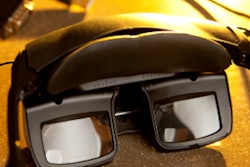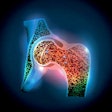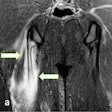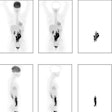
The problem of claustrophobia in MRI has definitely not gone away, and it appears to have got slightly worse during the COVID-19 pandemic, according to a new survey among specialist radiographers.
"The data, staff, and patients seem to suggest claustrophobia or anxiety in MRI is still an issue," Darren Hudson, MRI clinical lead at InHealth Group, a provider of diagnostic and healthcare services based in High Wycombe, U.K., told AuntMinnieEurope.com.
"A lag in the use of technology advances is one potential cause -- aging scanners and implementation of 70 cm bore and acceleration techniques -- and COVID has had an impact on enhanced anxiety overall," he explained. "The main issue is time -- lack of time and time pressures to be able to adequately support patients and prepare them."
 Darren Hudson from High Wycombe, U.K.
Darren Hudson from High Wycombe, U.K.Along with colleagues from the Medical Imaging, College of Medicine and Health, and College of Sports and Health Sciences at Exeter University, Hudson conducted an online survey in spring 2021 to determine the opinions of MRI radiographers.
They received responses from 65 out of 350 MRI radiographers, and they published the results on 14 October in Radiography.
A total of 62% of radiographers reported that they had to deal with notably anxious patients daily, with a further 30% feeling it was at least weekly, and only 8% stating a lower occurrence of monthly. Scan-related anxiety is still prevalent in the eyes of practitioners and is often a daily feature of clinical practice to manage and support, the authors wrote.
The six most frequently used methods to reduce patient anxiety were the following: contact over the intercom (used by 45 out of 65 respondents), on-the-day conversation (43 out of 65), eye mask/closing eyes (35 out of 65), someone in the room with them (32 out of 65), prisma glasses/mirror on coil (32 out of 65), and oral medication (30 out of 65). The effectiveness of each technique is shown below.

Responses as to whether the COVID-19 pandemic has had an impact on patient anxiety when attending for scans were split; 40% had found it had no impact, 35% felt it had, with 25% stating a little. Most noted was an associated fear of having to attend a hospital setting for a scan where there was concern over catching the virus, and this was also linked with a general fear amongst the public, particularly in the lockdowns, around leaving home, and being exposed to the virus.
Role of radiographers
Overall, support from radiographic staff is a significant factor in reducing patient anxiety and can make a real difference to the experience and successful completion of a scan, the researchers stated. More can be done to utilize the range of coping strategies available, with the key focus being on interventions that reduce perceived threat and increase ability to cope.
"Ongoing support is needed for both patients and radiographers to improve experience within MRI," the authors concluded, noting that communication and interaction with the patient are important, although time is a barrier to always being able to provide patient-centered care.
The use of a virtual reality (VR) simulator can assist by allowing realistic prep and practice before appointments to reduce failures and improve compliance without taking up valuable scanner time, according to Hudson, whose doctoral thesis is on the use of VR as a preparatory tool to support emotional control when undergoing MRI.
Hudson and his coworkers are about to submit for peer review their second article looking at the operational data. They are also planning a follow-up study on the patient perspective -- what matters, their journey in MRI, and their views on effectiveness of support strategies.















